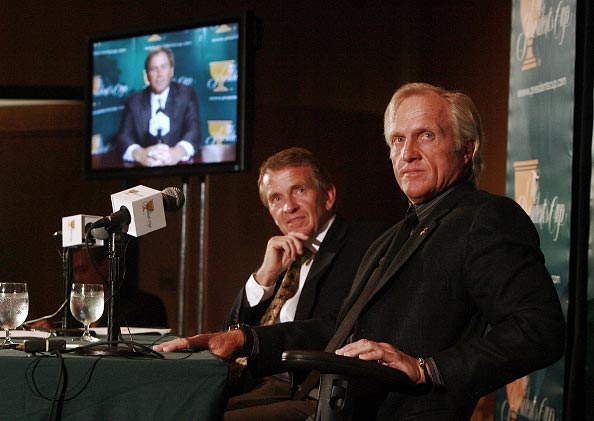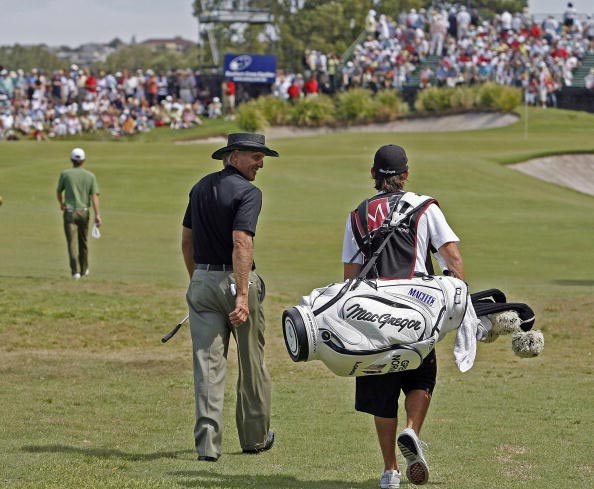Time flies when you’re having fun.
When I found out Australian Golf Digest was celebrating 600 issues across 50 fabulous years in October, I came to the realisation that this publication basically mirrors my own career timeline.
To think it’s been the country’s bible for golf for five decades is a huge feather in its cap. Being there to cover every one of my major achievements and milestones is very special to me. Suffice to say, I’ve been incredibly honoured to fill countless pages of this fine magazine over the journey, not to mention grace a few covers.
I’ve had my fair share of run-ins with some of the great writers, guys like Phil Tresidder and Tom Ramsey, but that’s the nature of the beast in our respective professions. I can tell you it’s made for one hell of a ride that I hope has a few more decades to run yet.
To help celebrate this magical milestone, I’ve been asked to share a few lessons each decade has taught me, along with the one mystery I just haven’t been able to solve through 50 years of trying.
1970s: Swinging in the seventies
The Seventies was a different ball game to what we see today. I look back on it as the time I got my first real taste of competitive golf. I knew if I was going to make it as a tour pro, I had to go through the antiquated system of doing a three-year PGA course, pass all my exams, work as a club pro selling tees and Coca-Cola in the pro shop and eventually play my way onto the Australian tour once I was fully qualified. No rocking up to Q-school like today’s players can.
This was also a decade when I was busy learning innumerable life lessons and the true art of golf through the wisdom of instructors like Charlie Earp. In fact, it was Charlie who passed on maybe the best piece of advice I’ve ever been given when he said: “Greg, you’ve got to DIN and DIP.” Do It Now and Do It Proper. Not long after, I did just that – winning my first professional event at the 1976 West Lakes Classic in Adelaide. It was a meteoric rise of sorts – I suddenly went from being this young kid from Queensland with potential to a tour winner overnight. But I felt very comfortable in my surroundings. I had a 10-shot lead after the third round that week, against a strong field with some big names. My confidence was high, and I knew this was where I belonged. Following Charlie’s advice, I just went for it, even though I wasn’t really technically ready. Before the ’70s came to an end, I had won tournaments all around the world.
I was on my way.
1980s: Timing really is everything
The Eighties, for me, was all about timing. I ventured to America to play and chalked up my first PGA Tour victory at the 1984 Kemper Open, just outside Washington D.C. – of all the places to do it. I was immediately thrown into the bright lights of network television as this daring, blond-haired Aussie who played an aggressive style of golf that seemed to resonate with the fans. America was intrigued, and I had found myself in the right place at the right time, playing some of my best golf right when the sport was starting to attract the corporate dollar. It was right there that I learnt about money, greed and power, and how to best handle the management of my career moving forward.

1990s: Pushing through the pain
The Nineties was tough. The World Golf Tour controversy stung me bad and left a sour taste in my mouth for a long time. I came up with the idea and was lambasted for it. It taught me a big lesson in how to deal with certain people. I probably became a more cynical person as a result of the experience but I just put my head down, kept winning and pushed through it all. I made a promise to myself to keep doing what I wanted to do, on and off the course. I think that’s important for anyone to adopt – stick to your guns and pave your own path.
The Nineties also brought with it the most significant change to golf, in my opinion, and that was the change in specifications of the golf ball. The consequences of that decision in 1996 have been nothing short of alarming, and are not limited to just the huge costs in building courses and technology, which have rendered many of our iconic layouts obsolete.
I mean, Jack Nicklaus used to hit a 1-iron into the 17th at Pebble Beach… Today’s players are hitting 8-irons! I really do wish this mess could have all been avoided.
2000s: Shifting my focus to the boardroom
The turn of the millennium was really about re-adjusting my business and expanding its model during the Global Financial Crisis. It was a transformational period for every business, not just mine. I do recall walking into every board meeting with my eyes wide open, expecting the unexpected and looking at every opportunity for growth. Thankfully, we got through the GFC and I learned you cannot underestimate the value of having street smarts. For me, I’ve relied heavily on street smarts throughout my life, not book smarts. It’s important you learn from your experiences, good and bad, and never make the same mistake twice.

2010s: Not the retiring type
I don’t know how many people have actually picked up on this but I never once said I had retired. I just quietly sailed away into the sunset but I never looked for fanfare, a legacy or a farewell tour.
A huge part of this decade for me has not only been about enjoying the finer things in life and looking after my own family and health; it’s been about helping others, too.
I’m still playing an active role in sourcing donations for the Australian Bushfire Appeal. I just did five hours (before writing this) helping out with the Folds of Honor military foundation here in America. It’s quite fitting, actually, because one of the things I’ve learned is there is a Japanese word – intoku – which means “good deeds done in secret”. It’s the mantra I’ve been following and will continue to follow as we close out a difficult year for the world. We must look ahead with optimism.

THE TRUTH ABOUT MY RELATIONSHIP WITH THE MEDIA
It’s been sad to see the slow decline of publishing during COVID-19, let alone the damage it has done to some credible golf titles around the world.
For me, there will always be a place for great golf writing. I still look back fondly at my relationships with some of the great golf writers of yesteryear but I must confess, there’s one thing I’ve never been able to grasp and that’s why some scribes just seemed to have it in for me. For reasons I’ll never understand, the Tall Poppy Syndrome was in full swing throughout my time on tour. All we were trying to do as players was elevate our sport, and for some unknown reason some journos wanted to tear us down.
I had love-hate relationships with guys like Tom Ramsey [above] but Tom wasn’t all that bad, and I don’t think I was either, at least not as bad as was reported. One of the big mysteries of life for me was why people didn’t really want to understand me, why they made no effort to seek my opinion on something before they wrote about it. They judged me for what they believed to be true, rather than coming to me for the actual truth. They were self-pleasing themselves. I think it had a lot to do with not wanting to look bad themselves. Many of them had already created a narrative to suit their editors, so going back on that narrative would have made them look stupid.
If I’m being totally honest, I always felt I was approachable in my playing days. I may have got narky over the odd article that was published that was completely wrong or full of disparaging remarks against me, but I never really had it in for golf writers, despite contrary belief. In fact, I think the only major confrontation I had as a player was with former PGA Tour commissioner Tim Finchem, in a hotel lobby, but that’s a story for another time.
The fact is, I loved playing golf in front of Australians. Coming home was always at the forefront of my mind – and still is. I hope when this crazy world returns to normal sometime soon, I can do just that. Come up and say, “G’day, Greg.”
I won’t bite.
